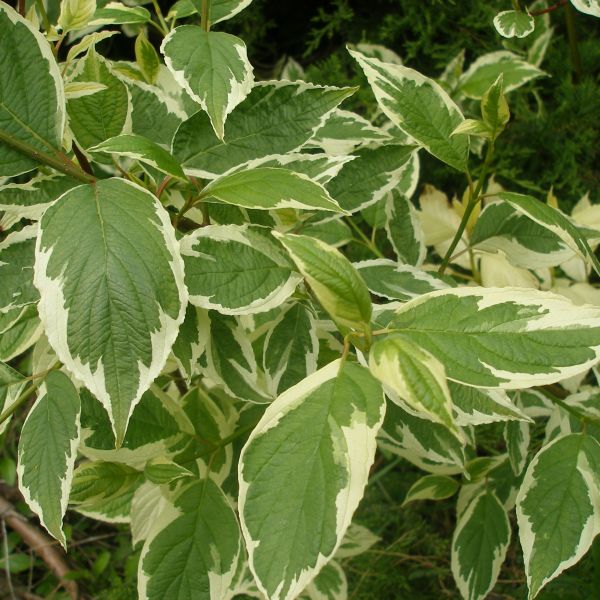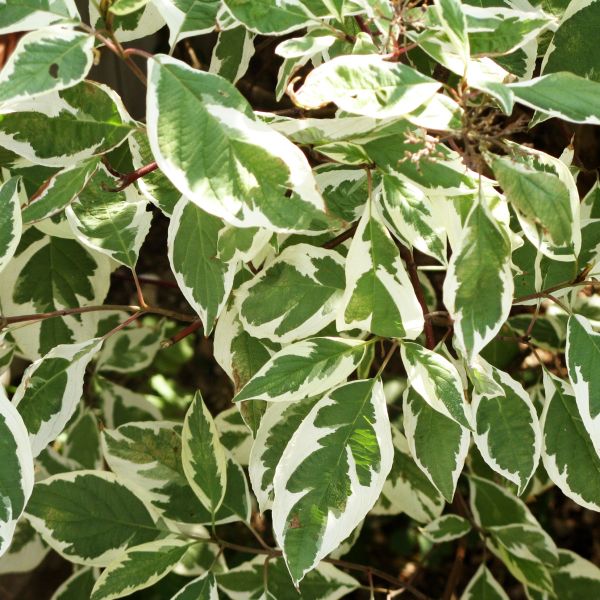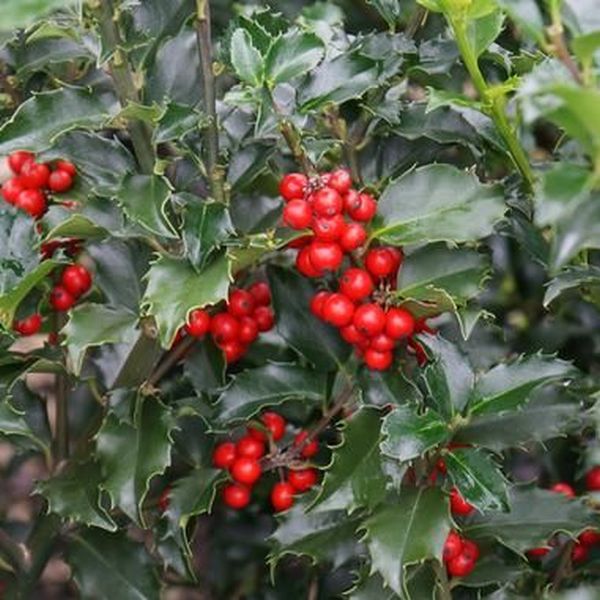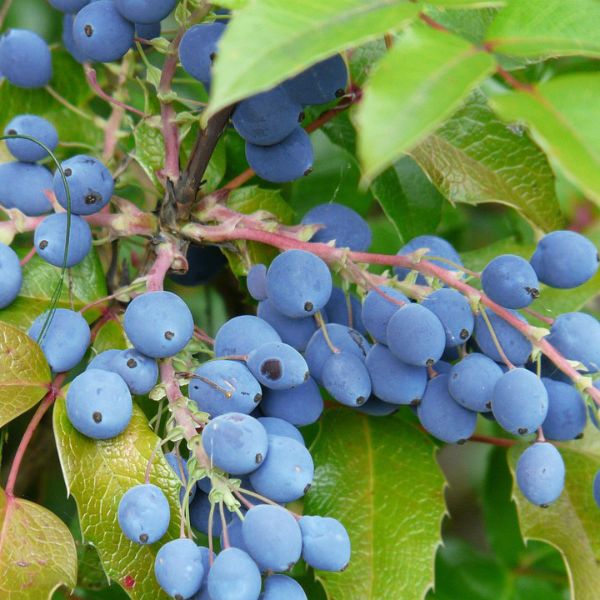


Honey Maid Holly
Ilex x meserveae 'Honey Maid'
47 reviews
Honey Maid Holly
Ilex x meserveae 'Honey Maid'
47 reviews
2.5 Gallon
We are sorry, product is currently out of stock due to seasonal availability. Please check the "Related plants available in your area" section below
Not just beautiful - intentionally selected by ShrubHub's 3D landscape design team to fit real-world spaces and maximize yard potential.
Why Honey Maid Holly?
Honey Maid Holly, scientifically known as Ilex x meserveae 'Honey Maid,' has gained popularity due to its attractive appearance and unique characteristics. This evergreen shrub showcases glossy, dark green leaves with serrated edges, providing year-round beauty to any landscape. Additionally, Honey Maid Holly produces vibrant red berries in winter, which add a splash of color. Its hardy nature and adaptability make it a preferred choice for gardeners.
Related plants available in your area
Sunlight
Honey Maid Holly requires full sun to partial shade, meaning it needs at least six hours of direct sunlight each day to thrive.
Watering
Honey Maid Holly has a low to moderate watering requirement. It prefers regular watering during the growing season but can tolerate some drought once established.
Fertilizing
The specific fertilizer requirements for Honey Maid Holly are not mentioned within the 40-word limit. To obtain accurate information, it is recommended to consult gardening resources or contact a horticulturist or nursery specializing in holly plants.
Honey Maid Holly
The Honey Maid Holly, scientifically known as Ilex x meserveae 'Honey Maid', is an evergreen shrub that belongs to the Ilex family. This popular cultivar is highly regarded for its stunning appearance and durability.
Key Features
- Growth Habit: Compact, upright, and densely branched.
- Foliage: Glossy, dark green, and spiny leaves with a unique holly shape.
- Flowers: Inconspicuous white blossoms appear in late spring.
- Berries: Female plants produce vibrant red berries that persist throughout winter.
- Size: Mature height averages 6-8 feet, with a slightly narrower width.
- Hardiness: Thrives in USDA hardiness zones 5-9, providing year-round interest even in colder climates.
Usage and Planting
The Honey Maid Holly serves as an excellent addition to any landscape, offering both aesthetic appeal and functionality. Its compact size makes it suitable for various settings, including gardens, borders, foundation plantings, or as an accent shrub. This holly cultivar is also a great option for hedges due to its naturally tight growth habit and ability to tolerate pruning.
When planting the Honey Maid Holly, ensure it receives full to partial sun exposure for optimal growth. Well-drained soil is preferred, although this versatile shrub can tolerate a range of soil conditions, including clay and sandy soils. Regular watering is necessary during the establishment period, but once fully established, it becomes drought tolerant.
Care and Maintenance
The Honey Maid Holly is relatively low maintenance and resistant to many common pest and disease problems. However, a few essential care practices can maximize its growth and overall health:
- Pruning: Prune in late winter or early spring to shape the shrub and remove any dead or damaged branches.
- Fertilization: Apply a balanced, slow-release fertilizer in early spring to provide necessary nutrients for optimal growth.
- Watering: Once established, the Honey Maid Holly is relatively drought tolerant but benefits from occasional supplemental watering during prolonged dry spells.
- Mulching: Apply a layer of organic mulch around the base of the shrub to conserve moisture, suppress weeds, and insulate the roots.
With its attractive appearance, versatile nature, and adaptability to various growing conditions, the Honey Maid Holly is an excellent choice for homeowners, landscapers, and garden enthusiasts. Whether used as a focal point in the garden or as a hedge for privacy, this holly cultivar is sure to add beauty and interest to any outdoor space.
Plant Information:
| Botanical Name: | Ilex x meserveae 'Honey Maid' |
| USDA Zones: | 5 - 9 |
| Water: | Moderate |
| Exposure: | Full Sun |
| Soil Needs: | Well Drained |
| Mature Height: | 6 - 8 feet |
| Mature Spread: | 4 - 5 feet |






Pollination Info
Pollination Information for Honey Maid Holly (Ilex x meserveae 'Honey Maid')
Honey Maid Holly is a variety of hybrid holly that belongs to the Ilex x meserveae species. To ensure proper pollination and fruit production, it is necessary to have both male and female plants in close proximity. Here are the key points regarding pollination for Honey Maid Holly:
Male and Female Plants
Honey Maid Holly is a dioecious plant, meaning it has separate male and female plants. The female plants produce berries while the male plants produce pollen. In order to obtain berries on the female plant, it needs to be pollinated by a nearby male plant. Therefore, it is essential to have at least one male plant within close range of the female plant to ensure successful pollination and fruit set.
Pollination Method
Holly plants are primarily pollinated by insects, particularly bees and other flying insects. These insects transfer pollen from the male flowers of the male plants to the receptive female flowers of the female plants. Bees are especially effective pollinators for hollies, so it is advisable to cultivate plants that attract bees nearby to enhance pollination rates for Honey Maid Holly.
Proximity and Planting
For effective pollination, it is recommended to plant the male and female Honey Maid Holly plants within close proximity to each other. Ideally, they should be within 30 to 40 feet of each other, as this range ensures that bees can easily navigate between the two plants to transfer pollen.
Timing
The best time for pollination is during the spring when the holly plants are in bloom. The male plants will produce flowers with pollen, which need to come into contact with the stigma of the female flowers for fertilization to occur. Be sure to observe the flowering times of your specific male and female plants to coordinate pollination for successful fruit set.
Other Considerations
It is worth mentioning that some cultivars of Honey Maid Holly may produce a small number of berries even without a nearby male plant due to low levels of pollen contamination from other holly species in the vicinity. However, to maximize fruit production and ensure consistent berry set, it is still advisable to plant a compatible male plant nearby.
FAQ
Honey Maid Holly FAQ
1. What is Honey Maid Holly and how does it differ from other holly varieties?
Honey Maid Holly, scientifically known as Ilex x meserveae 'Honey Maid', is a hybrid holly cultivar. It is a cross between Ilex aquifolium and Ilex rugosa, resulting in a unique combination of characteristics. Unlike some other holly varieties, Honey Maid Holly is known for its excellent disease resistance and cold-hardiness, making it a popular choice for landscapes in various climates.
2. What are the main features and characteristics of Honey Maid Holly?
Honey Maid Holly has several distinguishing features:
- Medium-sized evergreen shrub with an upright, pyramidal growth habit.
- Leathery, spiny foliage that is glossy dark green and has a serrated margin.
- Produces clusters of small white flowers in spring.
- Female plants bear bright red berries in fall, which persist throughout winter.
- Tolerates pruning well and can be shaped into hedges or topiary forms.
3. How tall and wide does Honey Maid Holly grow?
Honey Maid Holly typically reaches a height of 6-8 feet (1.8-2.4 meters) and a spread of 4-6 feet (1.2-1.8 meters). However, the exact size can vary depending on environmental conditions and pruning practices. It is generally considered a compact holly variety, making it suitable for smaller gardens or as a foundation plant.
4. Does Honey Maid Holly require specific growing conditions?
Honey Maid Holly thrives in well-drained soil and prefers acidic to neutral pH levels. It can tolerate a range of light conditions, from full sun to partial shade, but it generally performs best in areas with morning sun and afternoon shade. This holly variety is also highly tolerant of cold temperatures and can withstand winter climates down to USDA Hardiness Zone 5.
5. How often and how much water does Honey Maid Holly need?
During the first year of establishment, it is important to water Honey Maid Holly regularly to promote root development. However, once established, this holly variety is moderately drought-tolerant and only requires watering during extended dry periods. When watering, provide a deep soaking to ensure the moisture reaches the entire root system.
6. Does Honey Maid Holly attract wildlife?
Yes, Honey Maid Holly is known for attracting birds, particularly during winter when its bright red berries provide a valuable food source. The berries are not typically preferred by deer and rabbits, making it a relatively deer-resistant plant.
7. Does Honey Maid Holly require pruning?
Honey Maid Holly can benefit from occasional pruning to maintain its shape and size. Pruning is typically done in late winter or early spring before new growth begins. You can remove dead, damaged, or crossing branches, and also shape the plant to your desired form. It is recommended to wear protective gloves due to the plant's spiny foliage.
8. Is Honey Maid Holly susceptible to any diseases or pests?
Honey Maid Holly is generally resistant to many common holly diseases, including leaf spot, mildew, and black spot. However, it may still be susceptible to certain pests like spider mites, scale insects, or holly leaf miner. Regular inspection of the plant and appropriate pest control measures, if necessary, can help maintain its health.
9. Can Honey Maid Holly be used as a privacy hedge?
Yes, Honey Maid Holly can be a great option for creating a privacy hedge. Its dense foliage, upright growth habit, and moderate height make it an effective barrier plant. To form a hedge, space the plants about 3-4 feet apart and trim regularly to encourage bushier growth. The spiny leaves can also help deter unwanted intruders.
10. When is the best time to plant Honey Maid Holly?
The ideal time to plant Honey Maid Holly is in early spring or fall when the weather is cooler and there is less risk of heat stress. Planting during these seasons allows the shrub to establish a strong root system before facing harsh summer or winter conditions.
Planting & Care
Planting & Care for Honey Maid Holly (Ilex x meserveae 'Honey Maid')
Planting
- Choose a planting location that receives full sun to partial shade.
- Make sure the soil is well-draining.
- Dig a hole twice as wide and as deep as the root ball of the plant.
- Gently remove the plant from its container and loosen the roots if they are circling around the root ball.
- Place the plant in the hole, making sure the top of the root ball is level with the ground.
- Backfill the hole with a mixture of the native soil and organic compost.
- Water the newly planted Holly thoroughly.
- Apply a layer of mulch around the base of the plant to help conserve moisture and suppress weed growth.
Care
- Water the Holly regularly, especially during the first year after planting, to keep the soil moist but not waterlogged.
- Once established, the plant is moderately drought-tolerant but will benefit from regular watering during dry periods.
- Prune the Holly in late winter or early spring to shape the plant and remove any dead or damaged branches.
- Fertilize the Holly in early spring using a balanced, slow-release fertilizer.
- Avoid over-fertilization, as it can lead to excessive growth and reduced cold hardiness.
- Apply a layer of organic mulch around the base of the plant each year to help maintain soil moisture and temperature.
- Protect the plant from winter winds and harsh weather by wrapping it in burlap or applying a windbreak if necessary.
- The Honey Maid Holly is generally resistant to pests and diseases, but regular monitoring is recommended.
Check Out These Verified Customer Reviews:
Customer Reviews
4.5 out of 5 based on 47 reviews
Thank you! Your review has been submitted.
Item arrived in perfect condition. Very pleased.
Customer service was fantastic when I had a question about my order.
The Honey Maid Holly I received exceeded my expectations. The item appearance was beautiful, and the condition was pristine. The website experience was smooth, and the shipment was prompt. Great customer service as well.
Item has been added to your cart.




















